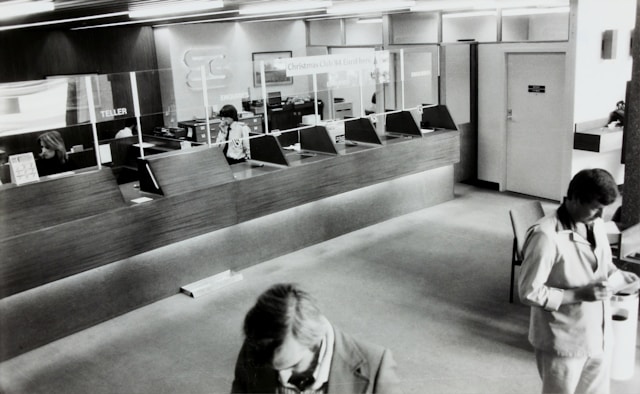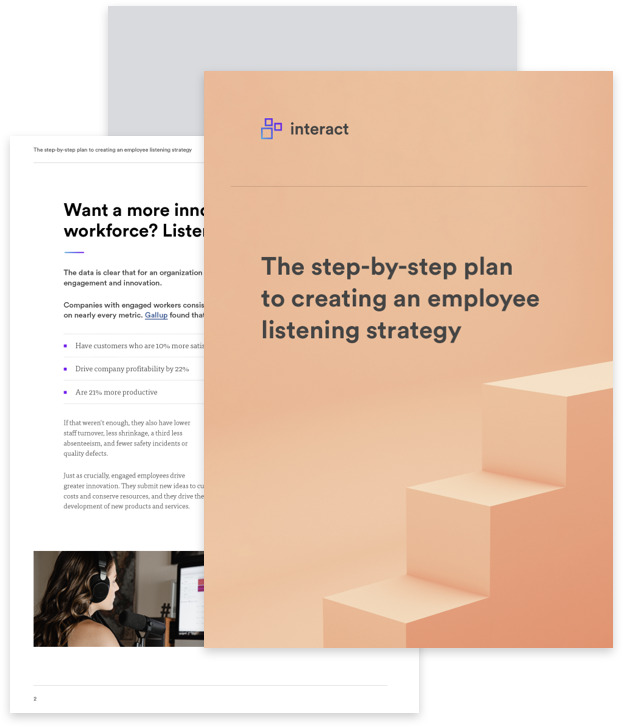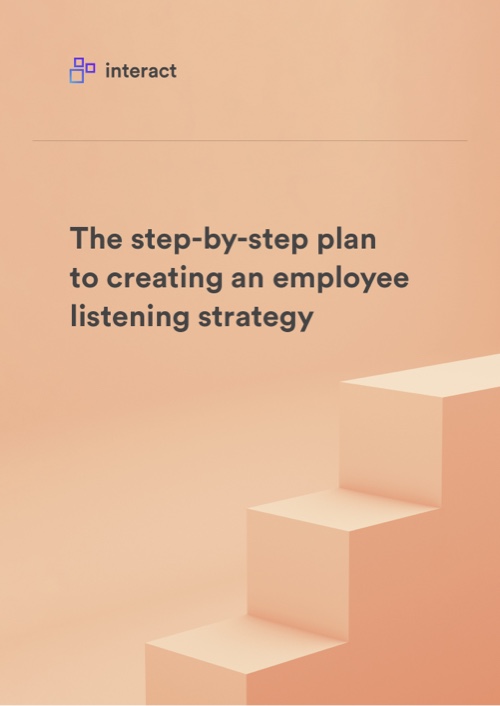Finding opportunities for innovation at work can be the difference between stagnation and excellence. What’s the best way to drive innovation at your organization, and how do you find and implement the most transformative ideas? This article shows you how to make it happen with successful examples from real organizations.
Every business wants to innovate, whether the end goal is to improve existing processes or identify new opportunities to take the enterprise to the next level. Yet innovation isn’t easy. If you’ve been doing things the same way for a while, it can be challenging to think about how to turn things around and spearhead fresh approaches.
Employees are a key source of innovation at work. They’re often the first to identify problems and inefficiencies in the way you do business. And because they’re so close to the issues, they’re also close to potential solutions and untapped opportunities. But to bring great ideas to the surface, you need to apply the right strategies.
So how do you encourage transformative ideas from staff and see them through to implementation? What’s the best way to get leaders on board with your innovation program? And what other factors do you need to foster workplace innovation? This article covers four innovation at work examples from real organizations to give you the inspiration you need.
- Uncovering innovation at work
- 4 Real-World Examples of Innovation at Work
The step-by-step plan to creating an employee listening strategy
Uncovering innovation at work
If you want to drive innovation at work, there are a few key elements you’ll need to succeed. You’ll notice that the companies highlighted in this article, all facing different challenges, paid special attention to these areas to maximize their innovation potential.
Gaining leadership support
In implementing an innovation or transformation program, leadership buy-in is key. Oftentimes, company executives are the ones calling for innovation – research shows that up to 90% of leaders see it as a priority, but only 6% feel their organizations are delivering. Innovation is a broad category, so you’ll want to ask leaders to get specific about what they’re looking for in terms of results, and how you can get the resources you need to implement a program that delivers.
Getting employees on board
Employees are key to innovation, and the ideas that originate from what they’re noticing in their day-to-day roles are often the most impactful. But you can’t count on employees to pitch ideas unprompted; a formal program and submission process are essential. You’ll need to communicate and sell your initiative. Get employees excited about the potential of an improved workplace, emphasizing their power to contribute to meaningful change.

Removing barriers to participation
When it comes to encouraging participation in your innovation program, making things easier is half the battle. If employees have to jump through hoops to submit an idea, they may give up, causing you to miss out on some truly great ideas. Make the process easy and accessible for every employee, whether they’re deskless, office-based, or work-from-home.
Making innovation at work visible
When employees see workplace innovation happening around them, it creates a domino effect of even more great ideas. Showcase innovation efforts and the difference they’re making for the organization. If an innovative idea from an employee is a success, ensure you have a way of shouting them out in a public forum. Recognition perpetuates a culture of innovation that reverberates throughout the organization.
Measuring success
Metrics around innovation aren’t always straightforward, so you’ll want to get clear on what your goals are. This means different things for different organizations. Success could be tied to quantity and quality of ideas received, impact on business goals, or ROI. Either way, establishing what you want to accomplish is key to driving strong, lasting innovation at work.
4 Real-World Examples of Innovation at Work
Innovation at work to combat industry change at Vueling

After world events hit the airline industry hard, Vueling saw indicators of overall company health, employee satisfaction, and engagement dropping. Leadership knew the company needed an enterprise-wide transformation program, but also knew it would be a challenge to drive change with a diverse workforce of frontline and office staff.
The power of initial buy-in
Having the project driven by leadership meant executive buy-in from the start – a key advantage. The top-down push for innovation generated interest from across the organization.
Vueling’s transformation team didn’t take this for granted, however, and made a concerted effort to identify key stakeholders from various departments. Determining how to make them comfortable with the plan and win their enthusiastic support was essential to the program’s success.
Working smarter to maximize a lean team
Vueling’s transformation program is managed by just two employees, only one of whom is dedicated to it full time. But the “team” is bigger than it seems – it also includes people from across the organization who lend expertise in small yet meaningful ways. By leveraging individuals who have the capacity and desire to help, the program can do more with less.
Another essential for managing a large program with a small team has been automation. Using it to manage incoming employee suggestions and feedback ensures that ideas don’t fall through the cracks and employees remain confident in the process. For example, employees receive a personalized message when their idea gains popularity among coworkers, without any manual action from staff.
The step-by-step plan to creating an employee listening strategy
Innovation as a form of action
Staff at Vueling were eager to submit suggestions. Seeing their own lives, industry, and workplace impacted so directly by world events motivated workers to participate in finding innovative solutions. Many had requested a formal way to share ideas before the airline’s transformation initiative launched.
Also crucial to the program’s success were a group of employee volunteers called “boosters,” who were enlisted to champion and facilitate the program. These volunteers encouraged participation and even submitted ideas on behalf of others who wished to remain anonymous.
“It was all about how to link those frontline staff members and get their feedback into our wider transformation… Ultimately, they’re the closest to the problems and also the closest to potential opportunities, so we wanted to make sure those people had a way to feed in.”
Veronica Hull, Head of Transformation at Vueling Airlines (Interact’s Listening with purpose webinar)
Coming together as a single, innovation-driven culture
In addition to uncovering innovative ideas, the program also sought to bring employees together. The company deployed several strategies to create a cohesive culture among cabin crews and office workers, including using its intranet to build community. The team also produced podcasts that shared employee stories and highlighted the goings on in different departments. Idea sharing itself served as a major path to cohesion as well. Allowing staff to see and collaborate on ideas from every corner of the organization went a long way toward creating a unified company culture.
Sparking innovation at work at Warner Bros. Discovery

As a creative company, Warner Bros. Discovery sought to capture the creative, innovative ideas of its workforce. With a distributed population of employees around the globe, the company needed a single, cohesive program to gather employee feedback and identify opportunities to innovate at work.
From dispersed efforts to a unified approach
As a global enterprise with thousands of employees, Warner Bros. faced significant challenges in creating a workplace innovation program. Different teams had implemented their own ideas campaigns, but a cohesive effort was needed.
The Spark Innovation team set out to solve this. A lean, two-person operation, they started small with a pilot program that served as a proof of concept. The program expanded from a single country to all of Europe and finally to employees around the world.
The team focused on capturing interest from a select group of leaders who recognized the power of employee listening to drive innovation. Getting them on board was easier with the test pilot demonstrating tangible results and potential. An integrated employee ideas platform was also essential to buy-in, as securing support for an additional platform would have been a non-starter.
Inside the Spark Innovation Campaign
The program’s highlight is the Spark Innovation Campaign, which has been held annually since 2017. Employees submit their ideas and answer questions that link them to a key business priority. Ideas are reviewed by employee judges responsible for assessing each business priority.
Once top ideas are chosen, their authors serve as project leads for implementing them. They’re connected with the right teams and internal resources to make it happen, including the campaign judges, who serve as key resources. The ideas are also featured on “Spark Success,” an internal hall of fame. Here, winners share what they pitched and how it’s been implemented, giving them the opportunity to own their contributions to innovation at work.
Motivating innovative ideas at work
The team has found that sharing progress from the campaign is key to boosting participation. Celebrating success stories drives engagement with the program and leads to even more great ideas.
Junior employees are a key demographic for the program – they have fresh ideas but don’t always have the confidence or know-how to pitch them. Many of the program’s volunteers are junior staff members who believe in the potential of employee ideas and are enthusiastic about innovation at work.
Results-driven evolution
The program has evolved over time, and the team has taken a results-based approach to see which methods garner the best ideas. For example, it started with a Shark-Tank-style model to generate buzz, but the motivation that came from company-wide recognition resulted in better outcomes than large prize packages. The team simplified its approach in response.
After each innovation campaign, a survey assesses employee sentiment, satisfaction rates, and what participants would like to see more of in future campaigns. Spark Innovation has achieved year-on-year growth, and satisfaction rates range from 75% to 90%. It’s clear that employees want to see the program return year after year. In addition, the ideas generated – all linked to concrete business objectives – show the program’s contribution to company goals, proving that encouraging employee innovation does pay off.
Innovating toward efficiency at The Co-operative Bank

The Co-operative Bank was grappling with a need to overhaul efficiency. Organizational transformation and improvements to policies, processes, and procedures were essential to meeting business goals. Previous idea collection efforts weren’t successful in generating innovative ideas from employees, so the bank got to work on a solution that harnessed its intranet to drive innovation.
An intranet forum for “bee”-ing efficient
In its quest for innovation at work, the bank looked to its intranet, The Buzz (the name is a nod to the worker bee – the symbol of Manchester, UK, where the bank is headquartered). The Buzz had already proven effective at driving employee engagement and was the perfect choice to host a new ideas forum called Bee Efficient. Employees use The Buzz in their day-to-day roles, so submitting ideas in the same centralized location made sense.
The forum makes it easy for employees to contribute ideas on increasing efficiency, whether they’re related to customer processes, operations, or another area – authors use hashtags (#digital, #IT, #product) to categorize their submissions. Organization-wide visibility lends a collaborative aspect to the process. Employees can see one another’s ideas and add their own reactions, which helps to reduce idea duplication and gauge sentiment.
In filtering ideas, the bank puts its employees’ expertise to good use by enlisting volunteers from various areas of the organization who can help make sense of submissions and determine viability. For example, if an employee has a suggestion for how to simplify a specific system, someone with expertise in that area can interpret the idea and make it more tangible if need be.
The step-by-step plan to creating an employee listening strategy
Facilitating and rewarding innovation at work
Employee buy-in for the program was made easier by a transparent culture and an executive team that believed employee ideas were key to innovation at work. To further encourage participation, the team utilized the bank’s huddles, which are regular check-ins between team leaders and frontline staff. Now, during this time, team members can also fill out a survey or submit an idea. These built-in opportunities make employees more likely to share suggestions.
The bank also rewards innovative workplace ideas with a voucher system and a quarterly article from leadership highlighting top Bee Efficient submissions. Company-wide recognition motivates employees to deliver even more high-quality suggestions that drive efficiency.
“No matter what your role at the bank, you can make a suggestion. We’ve made some big changes to some of our processes and procedures that have improved customer journeys as a result, maybe things that we wouldn’t have known without colleagues who (speak to customers) day in and day out…and have made some real cost savings and efficiencies as part of that.”
Laura Jones, Digital Colleague Experience Lead at The Co-operative Bank (Interact’s Listening with purpose webinar)
The innovative difference
The Co-operative Bank’s innovation at work efforts have resulted in an improved eNPS score, an increased number of month-over-month visits to Bee Efficient, and greater levels of idea-sharing. Bee Efficient has spurred large-scale changes to processes that have improved efficiency in internal operations and customer journeys. Employees’ ideas for innovating their workplace have led to cost reduction, revenue increases, time savings, and other benefits that improve the bank’s bottom line.
Overcoming a dispersed workforce segment to innovate at Canon USA

Canon USA sought to engage and generate ideas from a very specific division of workers. This group of employees works onsite at client locations and has a different work experience from the rest of the organization. Leadership wanted to ensure that these employees felt like part of the Canon team and could share their unique insights with the rest of the company.
Same employer, different experiences
The employees Canon wanted to target worked on client campuses, and were distanced geographically, technologically, and culturally from the rest of the organization. Through its intranet, The Loop, Canon gave this group opportunities to share their ideas and conducted regular pulse surveys to gauge satisfaction with various business areas.
Making participation easy from afar
Part of getting the best employee ideas for workplace innovation is making it as easy as possible to submit them. For Canon, this meant taking advantage of a centralized intranet platform where employees turn for everything, eliminating the hassle of switching between applications.
This division of employees is also on the move a great deal, so the intranet’s mobile capabilities are essential. If an employee has a great idea, they can submit it immediately, reducing the risk that they’ll lose their enthusiasm or train of thought.
Another participation-driving factor is speedy response time. The team replies as quickly as possible to ideas and feedback, making employees feel heard and more likely to contribute in the future.
Harnessing weekly webinars
Canon has a two-decade history of effective employee webinars. Topics vary, but each webinar gives employees from various locations the opportunity to build their networks among the wider organization, even if they’re on the frontlines and have minimal interaction with colleagues. The webinar chat is a valuable tool for crowdsourcing employee ideas for innovation at work as well. Discussions can be about anything and allow individuals to serve as subject matter experts for their colleagues.
Webinars are also a key part of communication around Canon’s ideas program. The team uses the platform to share the innovative employee ideas they’ve received, making note of which they can follow through on, which they can’t, and which are still under consideration.
Employees enjoy being recognized publicly when their suggestions are chosen, and knowing that their ideas have been considered even if they don’t move forward. Transparent updates on the process help maintain enthusiasm for innovation and keep employees feeling heard. This follow-up helps drive participation and even more workplace innovation in the future.



